Be honest. How many people reading this have attended or even taught a training course where you have used 2’X4” pieces of lumber to outline a room? How many of you have used this wood-outlined configuration for dynamic or static entry training? What about searching rooms outlined by strips of wood? These concepts are good at building on classroom instruction and enhancing the fundamentals necessary for entry and clearing. But is it great? Realistic?
Don’t worry, we both know the answers.
It is time to demand more out of training. The list of “props” that have been used by law enforcement and the military in training to add realism would take too much time to list. The days of telling an academy recruit, “Now simulate these pieces of wood are a room and this is the door,” are over. The technology of today allows us to have better training materials. Current technology allows us to have more realism added to our training scenarios. It allows us to train in controlled settings that are as real as possible without actually being in a free-standing structure, which has been vacated for your coursework.
There is nothing wrong with conducting your training in a real building. Personally, in the past I have run my recruits to several locations in various cities for them to get the most realistic training possible. If your organization is lucky enough to have established relationships with businesses, warehouses, apartment buildings and private homes, then you know just how challenging having a training course in those locations can be. It takes a significant amount of time and effort to set training dates, coordinate with all parties involved, ensure your class know the location, have enough parking space, obtain approval from the neighbors and/or city if necessary. Wouldn’t it be much easier to have training that encompasses all of those types listed in a single structure?
Of course! It would be great to have that type of capability in a single location. Is it possible and is it cost effective? Those are the key questions. And, by the way, the answer is yes, it is!
The days of training our first responders, SWAT, corrections and military personnel with the most realistic and safe training using only one building are here! The answer can be found with Action Target and our newest product, FlexTact®. Action Target has recently partnered with Hufcor to be the Exclusive World Wide vendor for their FlexTact® movable wall training system.
The FlexTact® system is currently used for non-live fire training only. Since non-live fire training can really be conducted anywhere, what is so great about this system? It’s simple. The system can be completely be reconfigured within minutes. For example, in a matter of a few minutes, you can transform your office scenario to a warehouse then into a residential setting. If you need to serve a high risk warrant and want to realistically structure your breach training, the physical layout of the residence can be duplicated with the FlexTact system.
Since FlexTact® is only available from Action Target, we have been receiving requests from all areas of the world on how to incorporate this revolutionary training system into a new building or existing structure. The great aspect of FlexTact® is that it can be placed in either! Those interested in FlexTact® are from the commercial, military and law enforcement communities. The FlexTact® system compliments our core expertise in live fire ranges and shoot houses such as the M.A.T.C.H. (Modular Armored Tactical Combat House) live fire structure shown below.
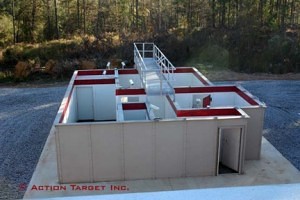 The FlexTact® system employs the following:
The FlexTact® system employs the following:
- Rugged 16 ga. welded steel frames resist impacts
- High Pressure Laminate surfaces are easy to clean and resist impacts
- Quickset bottom seals hold walls in place during exercises
- Overhead architectural aluminum tracks allow panels to move smoothly and quickly into place
- Side bulb seals allow panels to be configured quickly
- Specially designed passdoors for entry exercises.
- Optional window inserts and glass walls panels for diversified training scenarios.
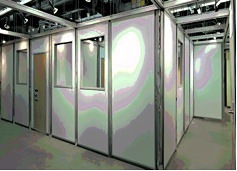 Please notice from the picture that everything is suspended from above. There are no grooves in the floor, which means there are no tripping hazards. The FlexTact® system has an overhead railing system built on a grid pattern that can be self-sustaining or tied into the existing beams of a building. The panels can be moved quickly and set onto the floor with rubber feet that keep them in place. These panels accommodate full impact breach doors for entry training. They have frangible window options that can be struck with shotgun less than lethal rounds, training with explosives like Stingball Grenades or Flash Bang technology.
Please notice from the picture that everything is suspended from above. There are no grooves in the floor, which means there are no tripping hazards. The FlexTact® system has an overhead railing system built on a grid pattern that can be self-sustaining or tied into the existing beams of a building. The panels can be moved quickly and set onto the floor with rubber feet that keep them in place. These panels accommodate full impact breach doors for entry training. They have frangible window options that can be struck with shotgun less than lethal rounds, training with explosives like Stingball Grenades or Flash Bang technology.
In addition to those already listed, you can enhance the realism of FlexTact® even further with the following options:
- Low light / No light capability
- Doors with handles that actually shut
- Wall graphics for custom scenes / murals
- Standing targets
- Foam furniture / props
This system has already been installed and used in many locations. It has been used by more than just law enforcement and military. This technology allows for firefighter training by filling the structure with smoke and having to search. Fire Departments from local, state and federal agencies are discovering the multiple uses for FlexTact®. They are also finding it is easier to obtain funding for a training structure that can be used for multiple purposes.
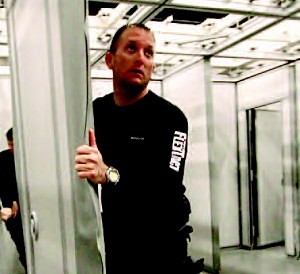 Imagine having a 40’x40′ room, like a typical gymnasium. It is a big box with a wooden floor. How many of you have a room like this somewhere? I would bet that most of you have something similar that is the property of your agency. What is that space being used for? Storage? Offices? Mat room for Arrest Techniques / Defensive Tactics? Classroom? Now imaging having all of those capabilities in just one room! With FlexTact®, you can quickly reconfigure that room into anything that supports your training needs.
Imagine having a 40’x40′ room, like a typical gymnasium. It is a big box with a wooden floor. How many of you have a room like this somewhere? I would bet that most of you have something similar that is the property of your agency. What is that space being used for? Storage? Offices? Mat room for Arrest Techniques / Defensive Tactics? Classroom? Now imaging having all of those capabilities in just one room! With FlexTact®, you can quickly reconfigure that room into anything that supports your training needs.
This is the most revolutionary new product for public safety training! The capabilities are so substantial, that it warrants a further look. Action Target welcomes you to review it for yourself. Here is the FlexTact® Brochure for you to review.
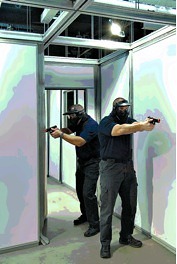 Take a look and you will see that FlexTact® will meet your training needs and can be placed in almost any existing building or incorporated into new builds. If you have a project currently underway and want FlexTact® installed, our lead time is as little as (5) five weeks from design approval to installation!
Take a look and you will see that FlexTact® will meet your training needs and can be placed in almost any existing building or incorporated into new builds. If you have a project currently underway and want FlexTact® installed, our lead time is as little as (5) five weeks from design approval to installation!
You will not find a better option for a realistic structure that can be used for such diverse applications. As the industry leader, Action Target asks you to contact us today to learn how we and the FlexTact® system can support your training needs. Enhance your training realism today with FlexTact® by contacting Action Target!
To learn more about Action Target and its full line of products, please visit www.actiontarget.com. For additional information on Tactical Breaching Door technology, please contact one of our Action Target Representatives, Law Enforcement & Commercial, Federal, Military or International.







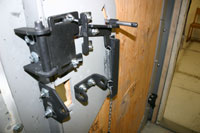 Action Target has developed a revolutionary Tactical Breaching Door™ that affords instructional staff the best option for consistent and realistic training. Our Breach Door adds a whole new dimension to training realism and eliminates the problems faced when training breaching techniques to students. The Tactical Breach Door uses advanced engineering which allows trainers to adjust the tension holding the door closed (shown below) and gives them complete control over the level of force required for a dynamic entry.
Action Target has developed a revolutionary Tactical Breaching Door™ that affords instructional staff the best option for consistent and realistic training. Our Breach Door adds a whole new dimension to training realism and eliminates the problems faced when training breaching techniques to students. The Tactical Breach Door uses advanced engineering which allows trainers to adjust the tension holding the door closed (shown below) and gives them complete control over the level of force required for a dynamic entry. The Tactical Breach Door is designed especially for use in Action Target’s Modular Armored Tactical Combat House (MATCH) shoothouse but it can also be used in a stand-alone frame or can be modified to fit into any existing shoothouse.
The Tactical Breach Door is designed especially for use in Action Target’s Modular Armored Tactical Combat House (MATCH) shoothouse but it can also be used in a stand-alone frame or can be modified to fit into any existing shoothouse.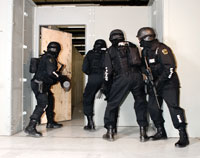 “Action Target’s Tactical Breach Door will advance training to a whole new level. For those of us who train, this innovation is a powerful and functional tool that will allow us to better prepare our teams to protect their own lives and the lives of those around them. Every law enforcement officer, special ops team and military recruit needs to be trained with this door so they can learn the techniques that will make building and room entries safer when breaching the fatal funnel.”
“Action Target’s Tactical Breach Door will advance training to a whole new level. For those of us who train, this innovation is a powerful and functional tool that will allow us to better prepare our teams to protect their own lives and the lives of those around them. Every law enforcement officer, special ops team and military recruit needs to be trained with this door so they can learn the techniques that will make building and room entries safer when breaching the fatal funnel.”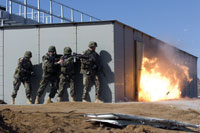 Take a look and you will see that our Tactical Breach Door will meet your training needs and can be used by itself with our free-standing option or integrate it into your MATCH or FlexTact® shoothouse.
Take a look and you will see that our Tactical Breach Door will meet your training needs and can be used by itself with our free-standing option or integrate it into your MATCH or FlexTact® shoothouse.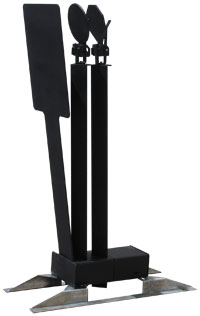 As we learn more and more about the human dynamics involved in armed confrontations, we understand that physical skills that require conscious thought or intellectual processing tend to break down rapidly under high levels of stress. If defensive skills and responses are not programmed in at a subconscious level, the sudden stress may cause us to fumble, freeze or panic. It is in this environment that reactive shooting skills are needed. Such reflexive shooting skills can be taught through the use of extremely short time limits, thus pushing the shooter to function at the limits of reaction and response time. This can be compared to learning how to hit a fast moving ball with a bat or racket, or developing the reflexes to block a punch or kick at full speed. Reactive steel targets provide the instant feedback required to program an officer’s reflexive shooting skills effectively and efficiently.
As we learn more and more about the human dynamics involved in armed confrontations, we understand that physical skills that require conscious thought or intellectual processing tend to break down rapidly under high levels of stress. If defensive skills and responses are not programmed in at a subconscious level, the sudden stress may cause us to fumble, freeze or panic. It is in this environment that reactive shooting skills are needed. Such reflexive shooting skills can be taught through the use of extremely short time limits, thus pushing the shooter to function at the limits of reaction and response time. This can be compared to learning how to hit a fast moving ball with a bat or racket, or developing the reflexes to block a punch or kick at full speed. Reactive steel targets provide the instant feedback required to program an officer’s reflexive shooting skills effectively and efficiently.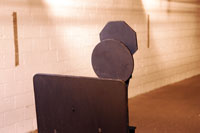 The basic function of the Bobber X-treme™ will probably sound familiar. A steel plate is presented to the shooter from behind cover. This plate can be hit at any time while it is exposed, and a computer interface is used to control the frequency and duration of the target exposures.
The basic function of the Bobber X-treme™ will probably sound familiar. A steel plate is presented to the shooter from behind cover. This plate can be hit at any time while it is exposed, and a computer interface is used to control the frequency and duration of the target exposures.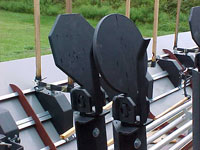 Judgment – Split-second judgment and threat analysis may be the most important elements of the training triangle. The revolutionary Bobber X-treme™ addresses this issue by presenting the shooter with two separate target plates, one directly behind the other. One plate is an 8-inch circle, and the other is an 8-inch octagon. Depending on your training scenario, you can classify all the circle plates as hostile, and all the octagon plates as friendly. When one of the plates jumps up from behind cover, the shooter must quickly determine whether the plate is hostile or friendly and then take the appropriate action. The circles and octagons look enough alike to force the shooter to be sure.
Judgment – Split-second judgment and threat analysis may be the most important elements of the training triangle. The revolutionary Bobber X-treme™ addresses this issue by presenting the shooter with two separate target plates, one directly behind the other. One plate is an 8-inch circle, and the other is an 8-inch octagon. Depending on your training scenario, you can classify all the circle plates as hostile, and all the octagon plates as friendly. When one of the plates jumps up from behind cover, the shooter must quickly determine whether the plate is hostile or friendly and then take the appropriate action. The circles and octagons look enough alike to force the shooter to be sure.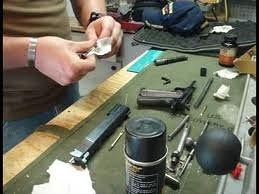
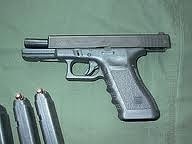
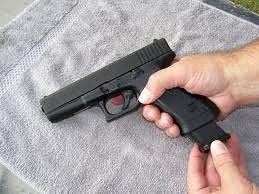
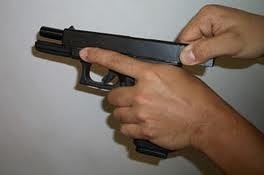
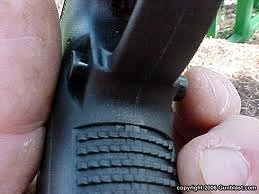
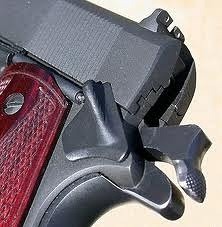
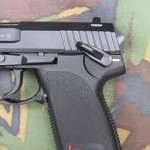

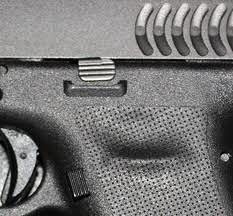 all normally.
all normally.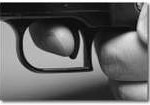
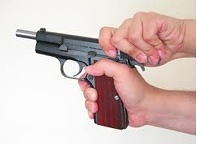 There is no shortage of techniques for clearing a stoppage or malfunction; just trying to explain the difference between the two sets off a never ending debate. Unfortunately, those who have time to engage in never ending debates lose track of what is important.
There is no shortage of techniques for clearing a stoppage or malfunction; just trying to explain the difference between the two sets off a never ending debate. Unfortunately, those who have time to engage in never ending debates lose track of what is important. 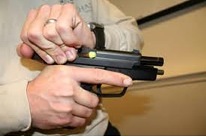 (1) Slide or bolt forward, AND
(1) Slide or bolt forward, AND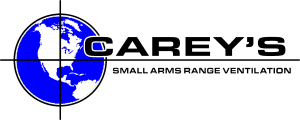 Action Target believes only the best of everything should be associated with all we do. One example of our continuous search for the best is our partnership with Carey’s Heating and Air Conditioning, Inc. After extensive review, we have aligned ourselves with Carey’s to use their heating, air conditioning and ventilation systems in order to provide our indoor range customers with the safest air conditions in the world. Action Target feels it is important for our readers to know more about Carey’s and the integral role they play in the industry. They are not only another provider of air flow products, Carey’s has been an innovator and pioneer with their systems. This article provided by Carey’s below is a little insight into the company. After reading, it will be clear to see why Action Target recommends their systems for our indoor projects.
Action Target believes only the best of everything should be associated with all we do. One example of our continuous search for the best is our partnership with Carey’s Heating and Air Conditioning, Inc. After extensive review, we have aligned ourselves with Carey’s to use their heating, air conditioning and ventilation systems in order to provide our indoor range customers with the safest air conditions in the world. Action Target feels it is important for our readers to know more about Carey’s and the integral role they play in the industry. They are not only another provider of air flow products, Carey’s has been an innovator and pioneer with their systems. This article provided by Carey’s below is a little insight into the company. After reading, it will be clear to see why Action Target recommends their systems for our indoor projects.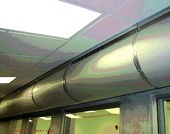 Specifically, the radial air diffusers and plenums are custom built and have been tested to provide laminar air flow at the firing line after proper commissioning. “Laminar” flow is a steady, even airflow required to safely clear contaminate from the respiratory zone of the users of the range. These special diffusers are not available from a standard diffuser supplier. The control system and programming uses standard parts from Johnson Control, but the programming of the equipment is critical. The programming is done by an experienced programmer who has worked on all of the ranges that Carey’s has completed. It is also critical to have the control system installed and tested to automatically shut down if unsafe conditions are detected. This will protect both the occupants of the range and the adjoining areas.
Specifically, the radial air diffusers and plenums are custom built and have been tested to provide laminar air flow at the firing line after proper commissioning. “Laminar” flow is a steady, even airflow required to safely clear contaminate from the respiratory zone of the users of the range. These special diffusers are not available from a standard diffuser supplier. The control system and programming uses standard parts from Johnson Control, but the programming of the equipment is critical. The programming is done by an experienced programmer who has worked on all of the ranges that Carey’s has completed. It is also critical to have the control system installed and tested to automatically shut down if unsafe conditions are detected. This will protect both the occupants of the range and the adjoining areas.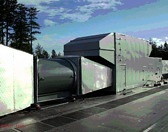 Carey’s Heating and Air Conditioning, Inc. has been an innovative force in range ventilation design for over 15 years.
Carey’s Heating and Air Conditioning, Inc. has been an innovative force in range ventilation design for over 15 years.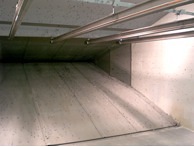 First up is the renovation of Dearborn Police Departments (DPD) firing range. Located in the basement of Michigan’s DPD, this project took careful planning and execution. With the help of several dedicated companies, Action Target managed the removal of DPD’s existing bullet trap, modified the existing target systems, cleaned the range and installed two 16′
First up is the renovation of Dearborn Police Departments (DPD) firing range. Located in the basement of Michigan’s DPD, this project took careful planning and execution. With the help of several dedicated companies, Action Target managed the removal of DPD’s existing bullet trap, modified the existing target systems, cleaned the range and installed two 16′ 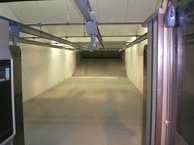 Congratulations to Dearborn Police Department and all those involved!
Congratulations to Dearborn Police Department and all those involved!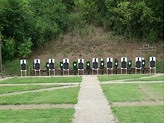 A special thanks goes to Officers Bob Allen and Greg Lee, City and State Officials, Metro Nashville Procurement, Action Target Great Lakes Territory Manager – Jason Snell, Action Target Project Manager – Brian Sanders, and many others for their hard work and a job well done!
A special thanks goes to Officers Bob Allen and Greg Lee, City and State Officials, Metro Nashville Procurement, Action Target Great Lakes Territory Manager – Jason Snell, Action Target Project Manager – Brian Sanders, and many others for their hard work and a job well done!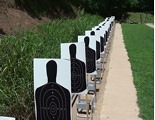
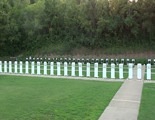
 801-377-8033 ext. 158
801-377-8033 ext. 158 Did you know that we are an international company? For years we have been increasing our presence abroad. Countries around the world have been increasing their police and military forces to parallel their growing populations. With more officers and law enforcement staff, countries are turning to Action Target to provide the very best training solutions. With our diverse line of range-related products, we have been fortunate enough to be selected to build some of the largest shooting facilities in the world. We have designed, manufactured and installed indoor, outdoor and M.A.T.C.H. (Modular Armored Tactical Combat House) ranges for our international friends and US military bases located on foreign soil.
Did you know that we are an international company? For years we have been increasing our presence abroad. Countries around the world have been increasing their police and military forces to parallel their growing populations. With more officers and law enforcement staff, countries are turning to Action Target to provide the very best training solutions. With our diverse line of range-related products, we have been fortunate enough to be selected to build some of the largest shooting facilities in the world. We have designed, manufactured and installed indoor, outdoor and M.A.T.C.H. (Modular Armored Tactical Combat House) ranges for our international friends and US military bases located on foreign soil.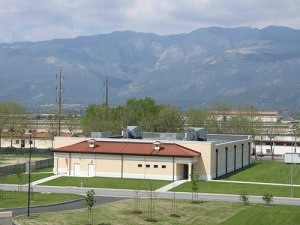 Along with our range and steel target technology, we have been sought for practical application training solutions as well. Action Target has been able to supply some of the best military and law enforcement trainers from the US to provide a comprehensive training program using our range equipment. Our ability to provide training on the equipment we manufacture and install continues to set us apart. We can provide this service with the purchase of our systems for a limited or extended time. If you do not have a range and/or would like to discuss having some specific coursework delivered to your personnel, we would like to discuss the options available with you. We have the capacity to deliver the entire spectrum of shooting-related coursework. Our capabilities including classroom and nomenclature discussions to static live fire, non-live-fire, force on force, close quarter combat, tactical live fire all the way to the pinnacle of tactical combat house live-fire training. Basically, if you have a firearm-related training need, whether it is for equipment, instruction or both, Action Target has a solution. If you would like to know more, please contact the Action Target representative for your area. Their information is below.
Along with our range and steel target technology, we have been sought for practical application training solutions as well. Action Target has been able to supply some of the best military and law enforcement trainers from the US to provide a comprehensive training program using our range equipment. Our ability to provide training on the equipment we manufacture and install continues to set us apart. We can provide this service with the purchase of our systems for a limited or extended time. If you do not have a range and/or would like to discuss having some specific coursework delivered to your personnel, we would like to discuss the options available with you. We have the capacity to deliver the entire spectrum of shooting-related coursework. Our capabilities including classroom and nomenclature discussions to static live fire, non-live-fire, force on force, close quarter combat, tactical live fire all the way to the pinnacle of tactical combat house live-fire training. Basically, if you have a firearm-related training need, whether it is for equipment, instruction or both, Action Target has a solution. If you would like to know more, please contact the Action Target representative for your area. Their information is below.